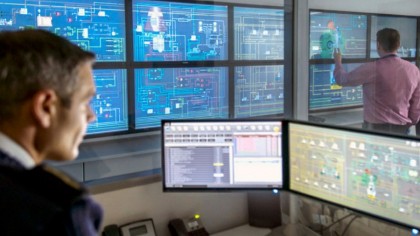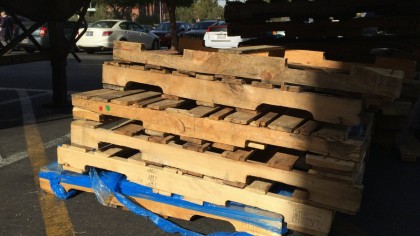Forget smart fridges: the Industrial Internet of Things is the real revolution
Industry 4.0 is already here and making massive differences
What is the role of big telecoms firms in the Industrial IoT?
It depends what part of the IIoT you are looking at. "For pure Industrial Automation, there will not be a strong cellular play," thinks Morelli, who states that 95% or more of the current IIoT is using wired technology, and much of that is just starting to convert to IP. "Looking at the broader 'Industrial' definition, there are absolutely strong plays for cellular including fixed and mobile asset tracking, commercial transportation and video surveillance, to name a few," he says.
"There are other scenarios where cellular will be used in conjunction with low-power mesh technologies, like for metering. Beyond this, the cellular carriers also see an opportunity to provide professional services, beyond just the connectivity, and are working to offer more robust solutions to encourage growth – like the AT&T M2X program."
Launched commercially at CES 2015 after a year in beta, AT&T M2X is a managed service for developers creating new IoT solutions. "In the Industrial IoT world, connecting devices and machines to the internet only has value if you can effectively store, analyse and leverage the data that's being transmitted," says Troiano. "M2X Data Service allows businesses of all sizes to manage and better utilise the data they collect from connected devices."

Why has there been relatively little talk about the IIoT until recently?
The IIoT is built to last and, consequently, doesn't grab headlines. "The equipment in the industrial market tends to have very long lifecycles – in many cases 10+ years, so the pace of innovation tends to be slower by nature," says Morelli. "In addition, it has historically been a very fragmented market, dominated by proprietary communication protocols."
However, the benefits of the IIoT are starting to attract the attention of CEOs, MDs and other upper management – real-time data on production, and more advanced analytics to improve productivity and efficiency are hard to resist. "Also, we have started to see industry initiatives," says Morelli. "And many of the big IT companies like Cisco, Oracle and SAP, and industrial manufacturers like Rockwell, Siemens and ABB are working to address many of the unique challenges that have held back the growth of IIoT."

Is 'track and trace' key to the IIoT?
The IIoT in its purest form is rapidly changing global trade. There are companies that now track pallets of goods around the world from port to cargo ship to plane to truck and, eventually, to a warehouse, shop or home.
"One of our customers now monitors seafood imported from Thailand to Chicago," says Troiano. "It's on the ocean for several days, then it goes onto a third-party truck, onto a railway, then onto another truck, and finally to its own distribution centre near Chicago.
Are you a pro? Subscribe to our newsletter
Sign up to the TechRadar Pro newsletter to get all the top news, opinion, features and guidance your business needs to succeed!
"They need to know that the seafood has been within a certain temperature range for the entire journey, and now they have sensors on the containers that look at the location, temperature, humidity, and they can even see if the doors have been opened at any point during the journey, which can speed up the process of getting it through customs."
Such mobile asset tracking is expected to quickly become the norm for high-value or perishable goods shipments, though the cost of those all-important sensors is crucial. "We try to track and trace where those pallets are, when they're arriving, and what the condition of the products on them is," says Jean Holley, Group SVP & CIO at US logistics company Brambles, which ships products globally for CostCo and WalMart.
"To do that for millions and millions of pallets and containers, it's got to be cheap – the pallet costs $20 and we make $5 profit, so the technology can't cost more than $3." However, that does depend on what's on the pallet – if it's holding a million-pound jet engine then that sensor becomes a no-brainer.
As well as increasing efficiency, that kind of tracking technology also gives companies more freedom to push contracts to third-party couriers that they may have no previous relationship with. If something goes wrong, blame is easily apportioned using real-time data. In the era of the Industrial Internet of Things, there are no hiding places.
Jamie is a freelance tech, travel and space journalist based in the UK. He’s been writing regularly for Techradar since it was launched in 2008 and also writes regularly for Forbes, The Telegraph, the South China Morning Post, Sky & Telescope and the Sky At Night magazine as well as other Future titles T3, Digital Camera World, All About Space and Space.com. He also edits two of his own websites, TravGear.com and WhenIsTheNextEclipse.com that reflect his obsession with travel gear and solar eclipse travel. He is the author of A Stargazing Program For Beginners (Springer, 2015),
